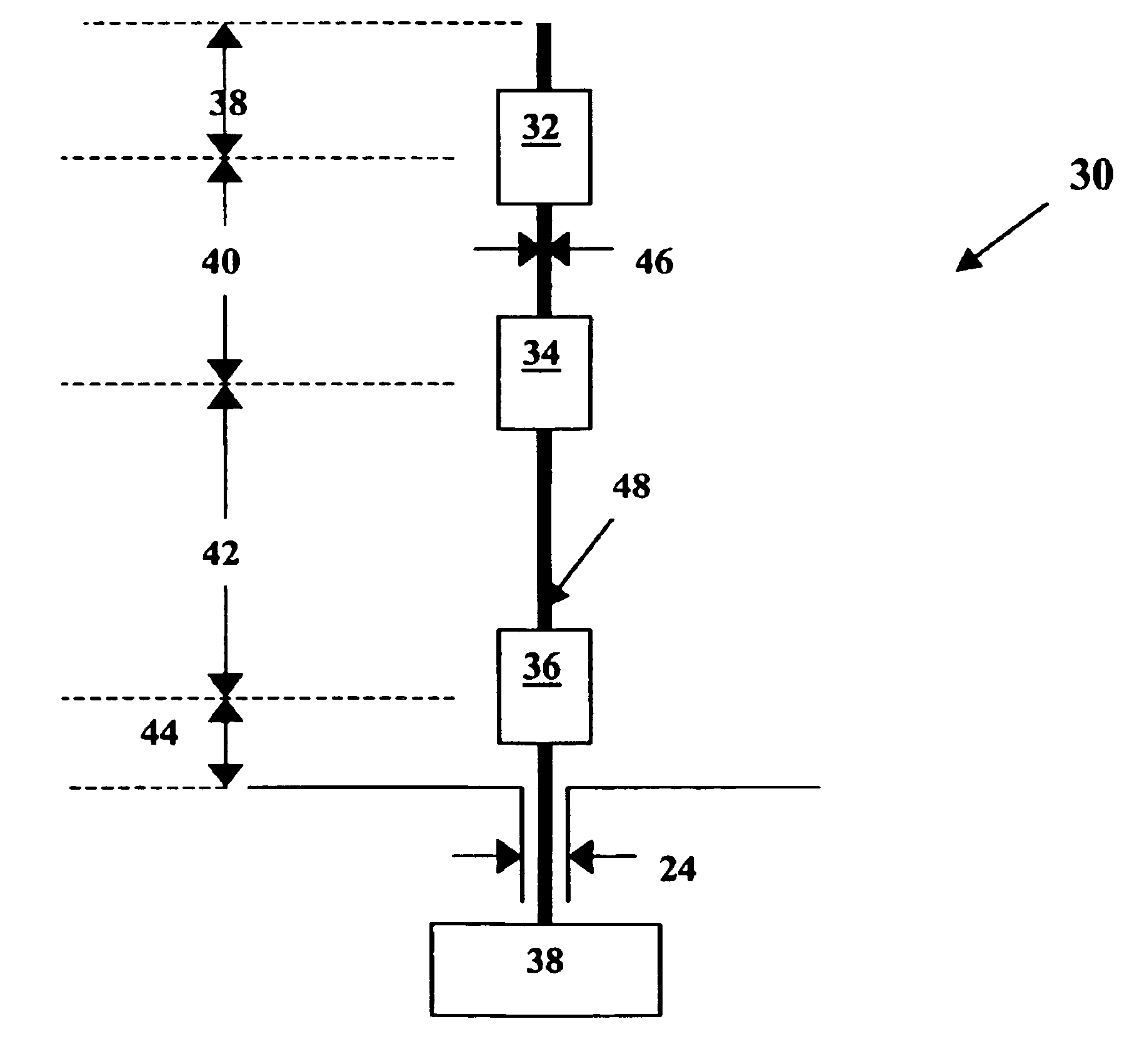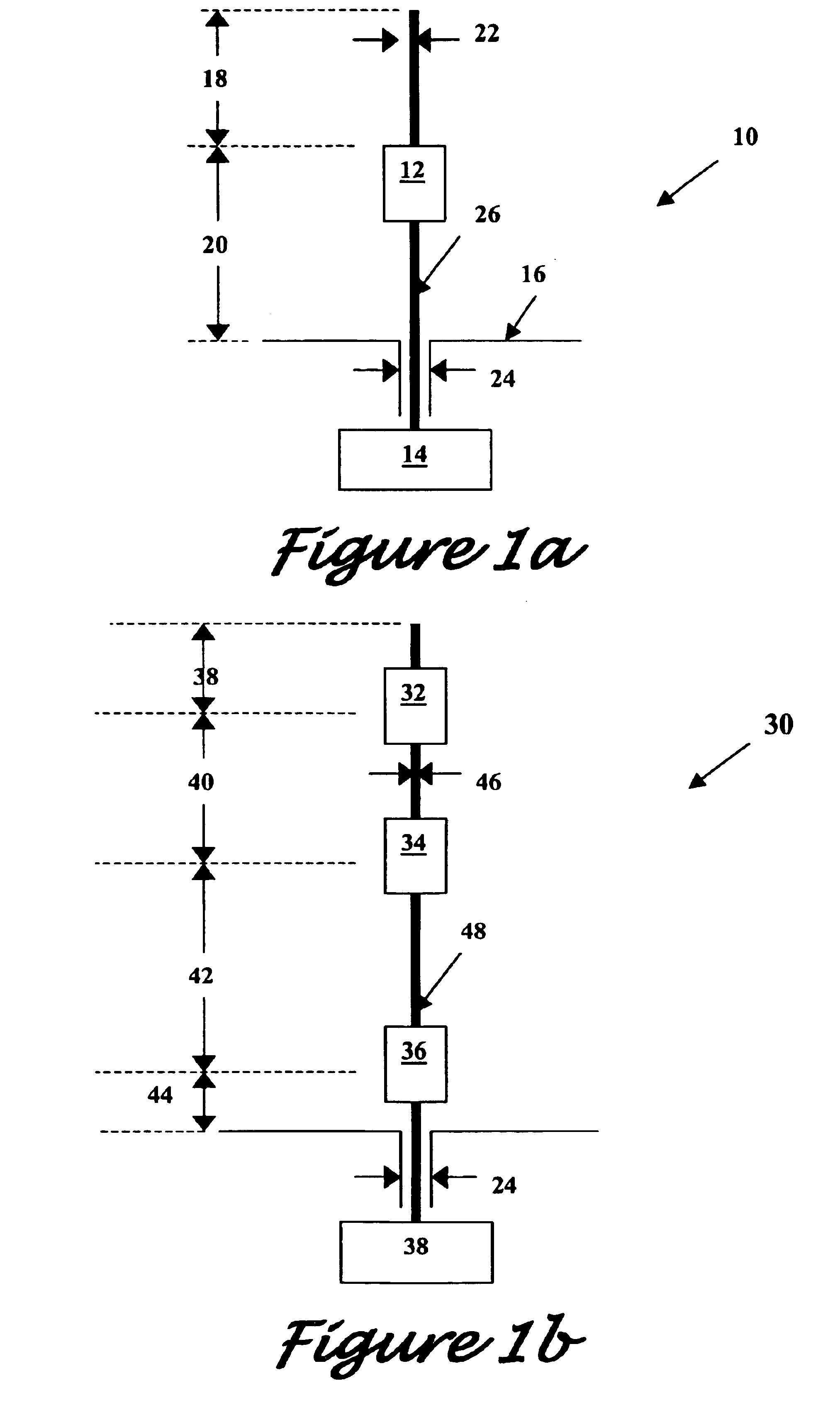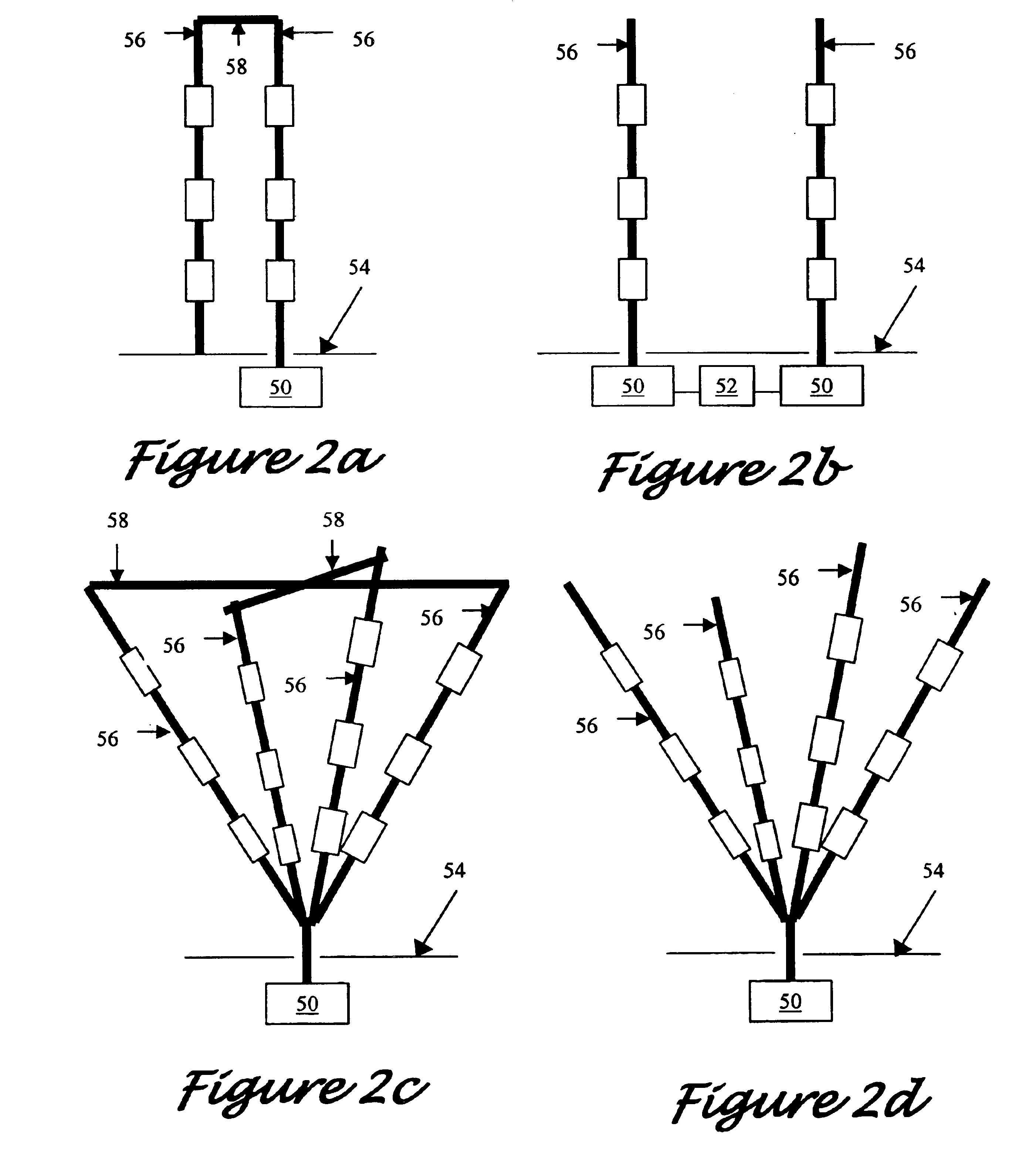Broadband monopole/ dipole antenna with parallel inductor-resistor load circuits and matching networks
a dipole antenna and load circuit technology, applied in the direction of antennas, elongated active elements, resonance antennas, etc., can solve the problem of not being the best way to model a load circuit, and achieve the effect of convenient construction
- Summary
- Abstract
- Description
- Claims
- Application Information
AI Technical Summary
Benefits of technology
Problems solved by technology
Method used
Image
Examples
second embodiment
[0075]For such antenna diameter, a corresponding antenna height of 42.5 cm is used. The coils used for constructing the inductors for load circuits 32 and 34 may be constructed by winding 20 AWG wire on standard all-thread dielectrics rods. Such dielectric rods may typically be nylon or teflon of sizes (0.25; 20) or (0.5;13), where a size of (x;y) corresponds to an x-inch diameter and y threads per inch. The rods may then be removed from the coil configuration in order to eliminate dielectric effects caused by the rods. Standard quarter-Watt resistors may be used for the resistor portions of the load circuits. The resistor may then be configured such that it is parallel to the coil, and may be placed either inside or outside the winding to form the parallel LR load. Exemplary specifications for the load circuits as discussed for this second embodiment are presented in the following table, Table 4. Specifications are presented for two exemplary variations of third load 32.
[0076]
TABLE...
embodiment 134
[0082]A present exemplary alternative implementation of an impedance transformer, involving a beaded coaxial cable 132, is much simpler to construct. A schematic illustration of such an embodiment 134 is given in FIG. 5b, wherein the matching network is positioned relative to a ground plane 136 and connected to an antenna 138. Since coaxial cable 132 is used, there is no need to adjust the bifilar windings to achieve the desired characteristic impedance. In order to realize a 1:4 impedance transformation called for in the design process, a 50Ω line is matched to a 200Ω line. The optimal Z0 for the transmission lines in this network is 100Ω, but the exemplary device herein is fabricated from 93Ω line (RG62A / U) since it is readily available. Such line is a flexible cable having a stranded, outer-conductor braid and a solid center conductor. A plastic jacket covers the outer-conductor braid and makes the diameter of the cable 0.6 cm. The jacket and outer conductor braid are preferably ...
first embodiment
[0084]Measured results are available for the exemplary embodiments and parameters provided in the specification. Comparison of computed theoretical antenna performance and measured actual antenna performance is useful in evaluating the effectiveness of actual fabrications. The first exemplary embodiment as discussed in the specification with a single load circuit such as FIG. 1a but with no matching network was analyzed and the results are presented in FIGS. 7a and 7b. FIG. 7a presents measured versus computed voltage standing wave ratio (VSWR) for such first embodiment, and FIG. 7b presents measured versus computed input impedance. Good agreement is observed between the computed and measured data for the embodiment without the matching network.
[0085]Data is also provided for the first embodiment with a matching network such as that illustrated in FIG. 5b. FIG. 8a illustrates the measured versus computed VSWR for such an antenna configuration with single LR load and matching network...
PUM
 Login to View More
Login to View More Abstract
Description
Claims
Application Information
 Login to View More
Login to View More - R&D
- Intellectual Property
- Life Sciences
- Materials
- Tech Scout
- Unparalleled Data Quality
- Higher Quality Content
- 60% Fewer Hallucinations
Browse by: Latest US Patents, China's latest patents, Technical Efficacy Thesaurus, Application Domain, Technology Topic, Popular Technical Reports.
© 2025 PatSnap. All rights reserved.Legal|Privacy policy|Modern Slavery Act Transparency Statement|Sitemap|About US| Contact US: help@patsnap.com



